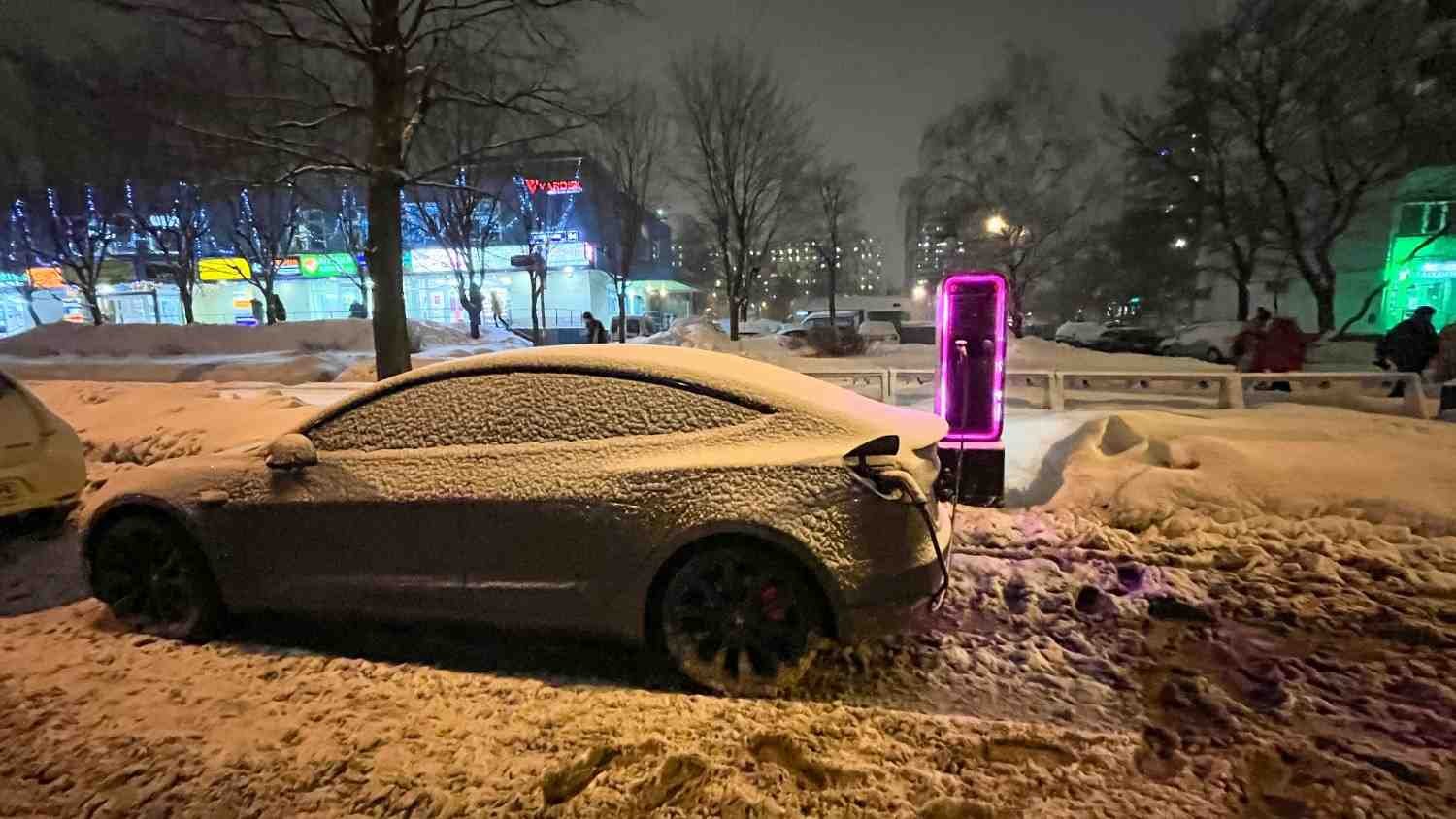Electric Cars In Winter: Cold Weather Impact On Range And Winter Driving Tips
With winter approaching, a common question around electric cars is how well they perform in extreme climates. This article explores how and why colder temperatures impact electric vehicles, along with practical tips for EV drivers to minimize these effects. We’ll also highlight the electric cars that perform best in cold weather and cover essential winter preparation: how to ready your EV before you drive, what to consider during your journey, and tips for efficient cabin management and winter-specific maintenance.
Impact Of Cold Weather On Range
Cold weather will have a negative affect the range of your electric car. Let’s look into why this will be:
Battery Chemistry Basics
Cold weather can negatively impact EV batteries, which are typically made of lithium-ion cells that perform poorly in low temperatures and may even sustain damage if exposed to freezing conditions for extended periods. In colder temperatures, the electrolytes in lithium-ion batteries thicken and slow down, preventing lithium ions from properly integrating into the electrodes. This can lead to lithium ions depositing on the electrode surface and forming lithium metal.
Additionally, cold temperatures slow the chemical reactions that generate a charge in lithium-ion batteries, resulting in a smaller charge capacity and reduced power. Cold weather also increases the battery’s internal resistance, further affecting performance.
Expected Range Reduction
Research from WhatCar? found that EVs lose an average of 15-20% of their range in colder weather.
In tests of 12 fully charged vehicles, each set to eco mode (or the closest equivalent), it was the most expensive models that saw their range diminish the fastest. For instance, the Lexus RZ displayed a range of zero after 136 miles, though it managed to continue for an additional 21 miles, bringing its total range to 157 miles. This gave the Lexus RZ the lowest efficiency in the test, achieving just 2.5 miles per kWh.
Temperature-Specific Data
Again, from What Car?’s research, The table below shows the impact of winter driving compared to summer driving for three popular EVs.
| Make and Model | Winter Range | Summer Range | Difference (%) |
|---|---|---|---|
| BMW i4 eDrive40 M Sport (Pro Pack) | 261 Miles | 317 Miles | 21.6% |
| Cupra Born 58kWh V3 | 182 Miles | 219 Miles | 20.6% |
| Tesla Model Y Long Range | 272 Miles | 304 Miles | 11.8% |
The EVs With The Best Winter Range
Although, indeed, EVs are adversely impacted by the colder weather, not all EVs are equally vulnerable to reduced range. Twice a year, during peak summer and winter, What Car takes a sample of popular electric cars and puts them through an endurance test to see how they fare in extreme climates when compared to their advertised range provided by the car manufacturer. Below are the results of their latest 2024 findings.
| Make And Model | Usable Battery Size | Official Range | Test Range | Short Fall | Efficiency On Test | Cost Per Mile |
|---|---|---|---|---|---|---|
| Mercedes EQE 300 Sport Edition | 89kWh | 380 Miles | 300 Miles | 21% | 3.4 Miles/kWh | 8.6p |
| Tesla Model 3 Long Range | 75kWh | 390 Miles | 293 Miles | 24.8% | 3.9 Miles/kWh | 7.4p |
| BYD Seal Design | 82.5kWh | 354 Miles | 255 Miles | 28% | 3.1 Miles/kWh | 9.4p |
| BMW i5 eDrive M Sport Pro | 81.2kWh | 338 Miles | 253 Miles | 25.1% | 3.1 Miles/kWh | 9.3p |
The Mercedes EQE and Tesla Model 3 Long Range performed the best, experiencing on a 21% and 24.8% shortfall in range. However, despite the drop in performance, What Car also finds that EV’s are still more economical than their petrol and diesel counterparts.
The most cost effective car that What Car has ever tested was the Toyota Yaris, costing around 11.2p per mile to fuel. The most effective EV that they tested was the Mini Electric, coming in at 8.7p per mile to charge! Therefore, don’t be disheartened by your EV’s lower performance during the winter - you’re still paying far less than the average petrol and diesel car owner.
When researching which EV you want to drive, it’s worth looking into its performance during the colder climates. All of the cars mentioned in the table can be salary sacrificed through The Electric Car Scheme. Have a look at our quote tool to look at the great prices we have on offer.
Essential EV Winter Driving Tips
Pre-Journey Preparation
Plug in and Preheat While Connected
To optimise your EV’s performance in cold weather, it’s a good idea to plug in your vehicle and preheat it while it’s still connected to the charger. This helps ensure the battery is warm before driving, reducing energy loss and improving range.
Using Workplace Charging Points
If your workplace offers charging points, take advantage of them. Charging during the workday not only ensures your car is ready for the drive home but also keeps your battery at an optimal temperature for better efficiency in colder weather.
Home Charging Preparation
At home, make sure your charging equipment is in good condition and that your garage or charging area is as insulated as possible. This helps keep the battery from getting too cold while it’s charging overnight.
Pre-condition Battery When Possible
Many EVs offer a pre-conditioning feature that allows you to warm up the battery before you start driving. If your car has this option, use it to ensure the battery is operating at its best, especially in winter.
Plan Routes with Charging Stops
When driving in cold conditions, planning your route ahead of time is crucial. Make sure to include charging stops along the way, especially for longer trips, to avoid running out of power due to reduced efficiency in low temperatures.
“EV drivers specifically need to be aware that cold temperatures impact their range. Accelerating gradually and maintaining consistent speeds will not only maximise your energy efficiency but also help reduce the risks of winter hazards, like icy or wet roads.”
During Your Journey
Reduce Speed
Driving at lower speeds can help conserve energy, especially on motorways. For instance, reducing your speed from 70mph to 65mph can significantly improve your EV’s range and efficiency, particularly in colder weather.
Use ECO Driving Mode
Most electric vehicles have an ECO driving mode that optimizes energy usage by adjusting acceleration and power delivery. Using this mode, especially in winter, can help you get the most out of every charge and reduce unnecessary energy consumption.
Maximise Regenerative Braking
Regenerative braking recovers energy when you slow down or stop, helping to recharge the battery. Make sure to maximize this feature in normal driving conditions—just be cautious not to rely on it in snowy or icy conditions, as it may cause loss of traction.
Keep Battery Charged Between 20-80%
To prolong battery life and ensure optimal performance, try to keep your battery charged within the 20-80% range. Avoid letting it dip too low or charging it to full capacity unnecessarily, especially during cold weather, as extreme charge levels can stress the battery.
Efficient Cabin Management
Use Seat Heaters Instead of Cabin Heat
Seat heaters are a more energy-efficient way to stay warm in your EV during the winter months. Instead of turning on the entire cabin heat, use the seat heaters to directly warm up your body, which consumes less energy and helps preserve your battery.
Focus Heating on Occupied Seats Only
To further optimise energy use, focus the heating on the seats that are actually being used. Many vehicles allow you to adjust the temperature for individual seats, so avoid heating unoccupied ones to save power.
Utilise Heated Steering Wheel
If your car has a heated steering wheel, take advantage of it! This feature warms your hands without needing to heat the entire cabin, making it a highly efficient way to stay comfortable while driving in cold conditions.
Turn Off Unused Air Vents
If you’re not using certain air vents, be sure to turn them off. Unused vents can waste energy by circulating unnecessary heat, so keeping only the essential ones on will help reduce energy consumption.
Consider Wearing Warmer Clothing
To reduce your reliance on cabin heating, consider dressing in layers and wearing warmer clothing. This way, you can keep the cabin temperature lower and still stay comfortable during your drive.
“We recommend using heated seats and, instead of warming up the entire car. If your car has regenerative braking, it may be less effective in cold weather. This feature captures lost energy when an electric car slows down, but it doesn’t work as well in winter conditions.”
Ready to electrify with salary sacrifice?
The Electric Car Scheme is an employee car benefit founded to help more people make the switch to an electric car to help the UK reach the goal of net zero by 2050.
How can I salary sacrifice an electric car?
As an employee car benefit, a company can lease an electric car through The Electric Car Scheme on an employee’s behalf. In return, the employee agrees to pay for the lease of the car through your gross pay (before tax) of your salary. As a car is an employee benefit it is technically classed as a ‘company car’ so it is subject to a benefit-in-kind tax. This tax is factored into our quotes and is currently set at 2% till 2025. Through this employee car benefit, you can save 20-50%!
To find out more about how you can save with salary sacrifice, watch our explainer video:
Last reviewed: 25th November 2024





